|

Visayas Alumni Chapter
Half of UPV Centennial Forest Burns
GREETINGS OF PEACE!
IT IS WITH SADNESS THAT I REPORT TO YOU OF THE TEXT MESSAGE THAT I
RECEIVED LAST SUNDAY AFTERNOON, MAY 2, 2010, FROM BROD ULOE ALAMA OF UPV,
REGARDING THE BURNING OF ABOUT ONE HALF OF OUR CENFOR PLANTATION IN UPV
AREA.
PLEASE BE INFORMED THAT AN EL NINO PHENOMENON STILL EXISTS IN THE VISAYAS
AREA, PARTICULARLY THE ILOILO AREA, WHICH CONTRIBUTED TO THE VERY VERY
DRY CONDITION OF THE CENFOR AREA WHICH MADE THE SAME VERY VULNERABLE TO
GRASS FIRE.
FYI, I INSTRUCTED BROD ULOE TO TAKE PICTURES OF THE BURNED AND UNBURNED
AREA AND PREPARE THE NEEDED REPORT FOR SUBMISSION TO THE UPBSFI. I ALSO
ASKED HIM TO SECURE THE WATER SYSTEM THAT THE FRATERNITY BOUGHT FOR THE
PURPOSE OF WATERING THE SURVIVING SEEDLINGS IN THE CENFOR AREA.
I HOPE TO VISIT THE AREA ASAP TO DETERMINE WHAT INTERVENTIONS WILL BE
IMPLEMENTED ESP DURING THE RAINY SEASON. SORRY FOR THIS TURN OF EVENTS.
HOPEFULLY THERE ARE LESSONS LEARNED ON THE CENFOR BURNING THAT WILL
CONTRIBUTE TO A MORE SUCCESSFUL INTERVENTION IN THE NEAR FUTURE.
GOD BLESS!
RENE DE RUEDA '64, 5-03-10
****************************************************
Brods, I have uploaded the
photos of the devastating wildfire which destroyed more than half of the
healthily growing seedlings we have planted and nurtured for almost two
years.
Diody, xentrio 08-B, 5-04-10
****************************************************
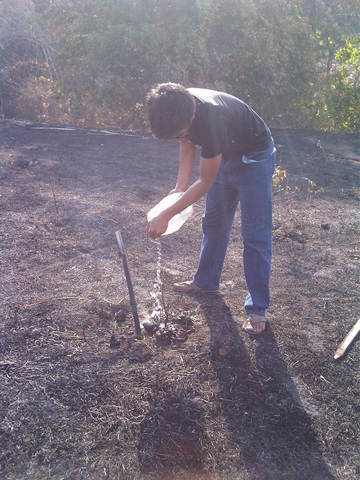
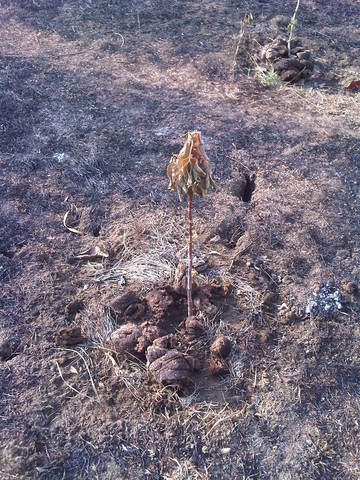
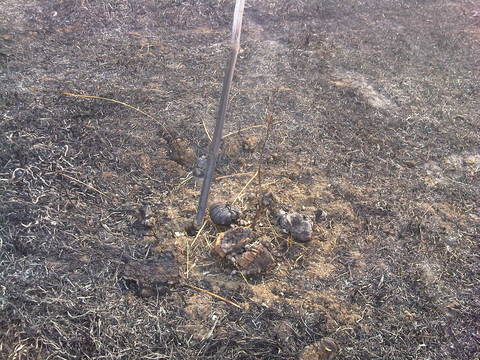
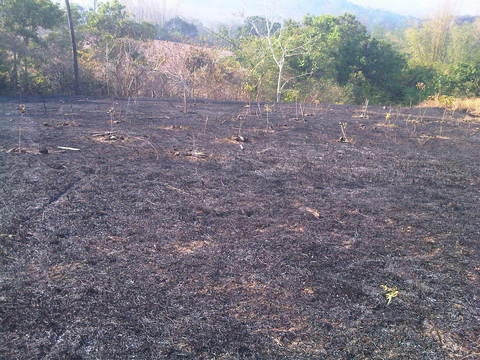
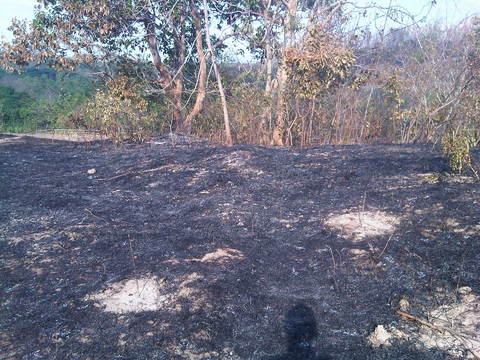
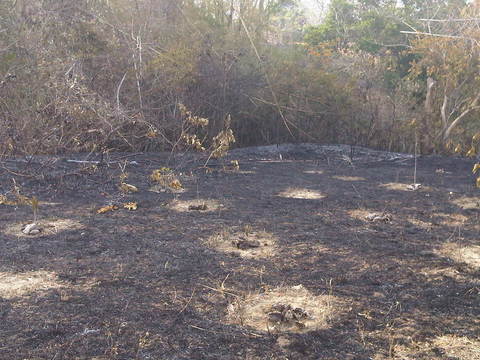
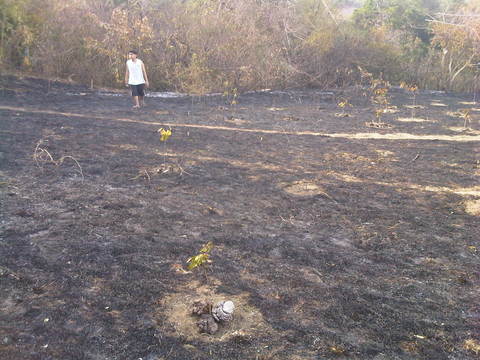
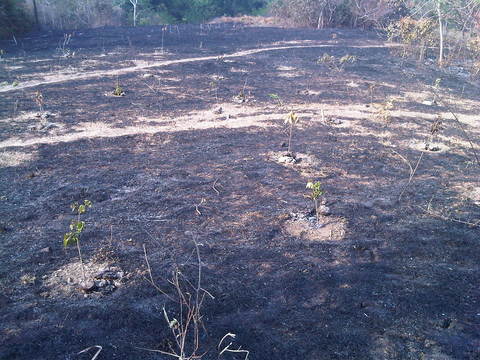
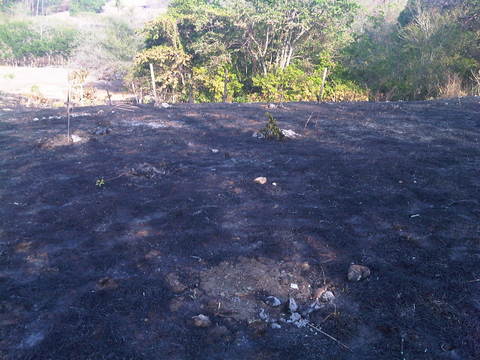
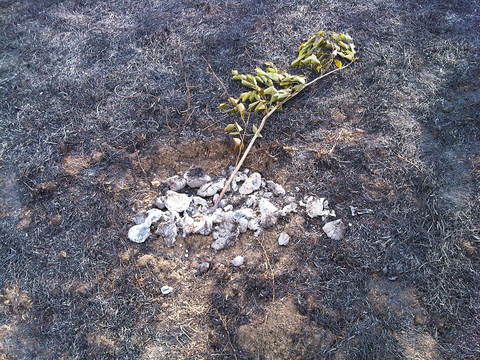
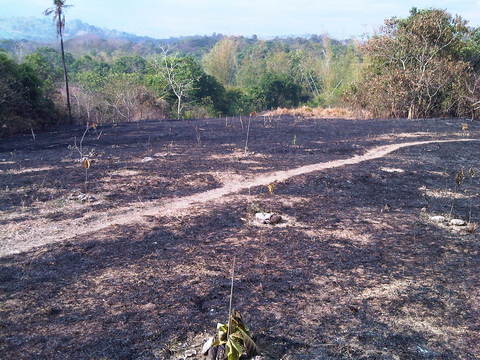
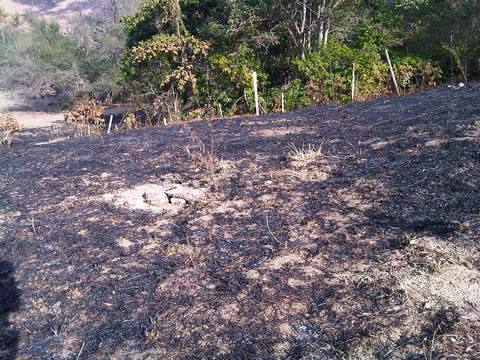
Thank
you for forwarding to us the pictures of the burned seedlings/
plantation. I hope the local brods, with the help of brods Uloe Alama
and other alumni brods, would be able to submit the needed report for
the info and appreciation of the brods in the UPBSFI and UPBSFAAI.
It pains
me to see the pictures of our dead/ burned seedlings, but as they say,
"tree planting is easy, it is the tree growing that is difficult".
I am comforted however to know by heart that Beta Sigmans are
not "quitters", hence, the bigger challenge for us is how to
rehabilitate the burned area asap, taking into account our learnings
from the said burning incident.
My best
regards to all our UPV brods and alumni brods in Iloilo.
Rene,
5-04-10
****************************************************
Dear Brods,
Greetings of peace, my dear brothers!
It was at this same time last year that Brod Rene and I were in UP
Visayas, Miag-ao, Iloilo. It was a nice trip and I really felt excited,
especially coming back to Iloilo City by jeep. I sure had inhaled a lot
of carbon monoxide enough to last me for a month. Don't get me wrong but
I enjoyed riding those jeeps, squeezed like sardines. I remember my
childhood days in the province hanging at the back of jeeps and
tricycles. What a joyful experience!
I have mixed feelings about the grass burning of the plantation. I have
seen the pictures which is typical of a burned area. It is really
demoralizing but it will never be hopeless. The burning opens our eyes
on the importance of maintenance and protection of the plantation. Most
of the time the cause is social problem and negligence; hence, people
who pasture in the area should be part of the effort of a successful
plantation development. It is either the university and the local
government will have to impose its police power, or have a dialogue
with these people in an amicable way by emphasizing the consequences of
their non-cooperation.
On the technical side, if you notice, the weeding and mulching around
the seedling deter the fire from burning the stem. This prevented the
total destruction of the seedling. I see some grown-up seedlings burned
but I am certain that they will survive...and come rainy season they
will sprout. The small ones have no hope but to replant them. So, I am
recommending that the seedlings to be planted should be at least four
feet high. Indigenous species like Narra, Acacia and other legumes can
withstand burning at this height. Cleaning and cultivating at least a
meter around the seedling before the dry season will prevent the fire to
char the stem. Mulching can be dug around the stem and cover it with
about an inch of mixed soil and pulverized dung. Continuous watering is
very important at the outset of the dry season. Tree guards are also
necessary to protect the seedlings from animal destruction.
I am always confident that the UPV CENFOR will be successful as long as
the brods and sisters are around to maintain and protect the seedlings
planted. It will just take years of patience and commitment to do it.
Keep up the good work.
Brod Johnny Regadio '66UPCF, 5-04-10
****************************************************
All,
This reminds me of the failed reforestation and afforestation effort of
the Philippine Government. Planting is easy but there were no
maintenance and most usually the laborers intentionally burned the area
so they don't have to hike far to do replanting. How long have we had
the reforestation project in Minglanilla, Cebu and Caniaw, Bantay Ilocos
Sur? How much money has been spent. And yet there is not much that can
be shown about these areas. My proposal is to spend money and effort for
maintenance (mulching, periodic clearing around the seedlings during
summer months, try to dig a well if possible for watering during
excessive heat, etc.) Select fire resistant species like teak, madre de
cacao etc. There is nothing wrong with planting species like anabiong
but wouldn't it be more viable if we planted species of economic value?
For example, katurai, kalingag, malungai, himbabao (alukon), alagaw,
albutra (for birth control) and as a help for forest protection, we may
have to plant sabawil atap, lipang kalabaw etc. It may also be necessary
to raise money to hire a part time guard to maintain the area. I am
willing to contribute initially $100.00 on this endeavor.
I was looking at the pictures and it seems only our plantation was
razed. Please reassess the area and if you feel we will have a problem
establishing a forest in that area, then we might as well cut our losses
and look for a more suitable area. This is not quitting but improving
the playing ground. How is the cooperativeness of the local government
officials?
Ernem Butburatem '58UPCF, 5-04-10
****************************************************
(Back--->
Visayas Updates Menu)
(Back ---> Features)
|












